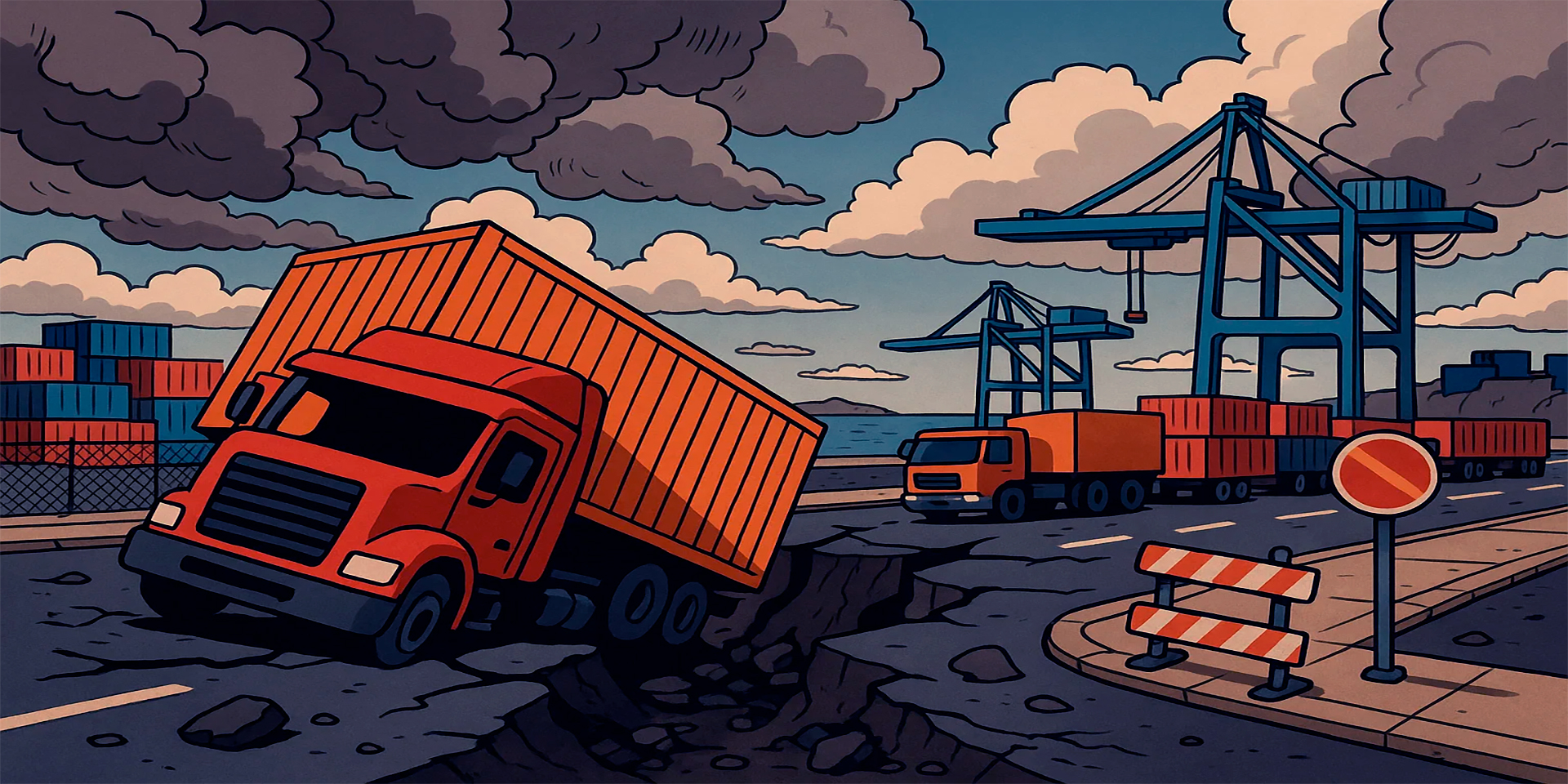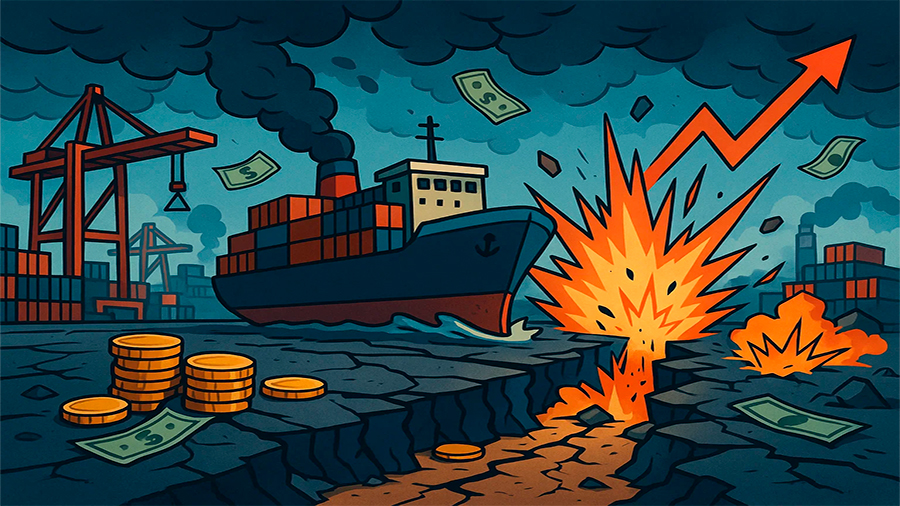Credit Risks in Unstable Logistics Environments for Lenders
Risks of Non-Repayment: Lending to Companies in Countries With Unstable Logistics
Lending across borders always carries uncertainty, but financing companies in countries with fragile logistics introduces a very specific set of repayment risks. Credit depends on predictable operations, consistent revenue, and a stable environment for goods to move. When ports clog, roads collapse, or borders close, even a well-managed company can miss repayment deadlines. These risks emerge not from poor management but from systemic weaknesses in supply chains and infrastructure. For lenders, understanding these dynamics is not optional—it is the foundation of responsible credit allocation. In unstable environments, risk is not just financial but logistical, and non-repayment becomes far more likely.
Why Logistics Instability Directly Affects Repayment
Repayment risk rises sharply when supply chains are fragile. A borrower’s ability to pay is directly linked to the speed and certainty with which goods move. When shipments stall, revenue falls, and repayment timelines are disrupted. Even short interruptions—such as a week of port congestion—can erode cash flow to the point where loan installments are missed. Unlike industries in stable regions, borrowers in fragile logistics markets face disruptions outside their control. The result is greater volatility in repayment, which makes loans harder to price and defaults more frequent. Lenders cannot treat these environments with the same models they use in mature economies; doing so underestimates the scale of risk and creates exposure to sudden defaults.
Shipping Delays and Repayment Volatility
Delays in shipping are one of the most direct causes of repayment problems. A company exporting goods may have revenue tied to delivery schedules, but when shipments are trapped in ports or blocked at borders, those payments are postponed or lost entirely. Firms dependent on trade cycles for cash inflows often cannot sustain debt repayments without steady shipments. Customs inefficiency, weak infrastructure, or political friction all contribute to these disruptions. Even if a company has strong contracts, penalties for late delivery or spoilage reduce profit margins. This fragile operating environment makes repayment unpredictable and exposes lenders to risks unrelated to borrower performance.
Main Causes of Shipping Disruptions
| Cause | Effect on Borrower |
|---|---|
| Congested ports | Contract breaches, cash delays |
| Weak customs processes | Extended clearance times |
| Poor road/rail links | Rising transport costs |
| Political barriers | Temporary export restrictions |
Market Shutdowns and Loan Instability
Shutdowns in fragile logistics markets create acute repayment risks. Strikes, security incidents, or severe weather can shut down entire distribution networks for days or weeks. For borrowers, this means a total halt in cash inflows, while lenders continue to expect repayment on schedule. Manufacturing plants relying on imported parts often idle production during shutdowns, causing direct income loss. Exporters face canceled contracts if goods cannot leave the country on time. The difficulty for lenders lies in distinguishing between a temporary liquidity issue and a deeper solvency problem. With limited predictability, credit portfolios exposed to such markets experience spikes in default rates whenever shutdowns occur.
Types of Shutdown Events
| Event | Result |
|---|---|
| National transport strike | Supply chain frozen for weeks |
| Border closure | Export contracts voided |
| Floods or storms | Damaged infrastructure, blocked routes |
| Security unrest | Restricted movement, disrupted trade |
Cost Volatility and Repayment Pressure
Logistics breakdowns do not only block goods—they also drive unpredictable costs. When shipments stall, companies must pay for storage, insurance, or alternative routes, each eroding their margins. These additional expenses reduce the pool of funds available for loan repayment. Currency instability often follows logistics crises, as disrupted trade weakens exchange rates and inflates import costs. Borrowers caught in this cycle may see profits erased in weeks, despite steady demand for their goods. Lenders exposed to such borrowers face heightened risk of missed payments, since the shock originates from external cost volatility rather than internal mismanagement. Without accounting for these pressures, credit agreements become vulnerable to widespread non-repayment.
Sector-Specific Risks in Fragile Logistics Environments
Not all industries face logistics instability equally. Export-driven industries such as agriculture and manufacturing are more exposed than services. Agriculture depends on timing: perishable goods lose value quickly if shipments are delayed. Manufacturing relies on imported components, and when parts fail to arrive, production stops, creating direct revenue loss. Pharmaceuticals face medium-level risks—stockouts harm credibility, but demand tends to remain stable. Service-based industries experience less direct exposure but still rely on functioning logistics for their inputs. For lenders, mapping these sectoral differences helps them allocate credit more effectively and avoid concentrated risk in high-exposure industries.
Sector Exposure to Logistics Risks
| Sector | Exposure Level | Impact on Repayment |
|---|---|---|
| Agriculture | High | Spoilage, missed seasonal windows |
| Manufacturing | High | Idle plants, canceled export orders |
| Pharmaceuticals | Medium | Stockouts, rising costs |
| Services | Low | Indirect disruption through supply costs |
Country-Level Risks and Infrastructure Gaps
Countries with fragile logistics often share structural weaknesses: underdeveloped infrastructure, limited port capacity, and poor maintenance of roads and rail. These weaknesses not only increase costs but also create unpredictability in repayment. For example, a highway closure in one region can paralyze exports nationwide if alternative routes do not exist. Landlocked countries face higher risk due to dependence on neighboring states’ infrastructure. Lenders operating in such environments must assess logistics infrastructure alongside financial indicators. A borrower with strong books may still default if their market is vulnerable to a single point of failure in transport or border management.
Currency and Credit Risk Multipliers
One overlooked aspect of logistics fragility is its effect on currency and credit dynamics. When exports stall, trade deficits widen, weakening local currencies. For companies with foreign-denominated loans, this devaluation multiplies repayment burdens overnight. A missed shipment may therefore translate into higher debt service in hard currency, doubling the impact of the disruption. Credit systems in such countries often lack flexibility, providing little room for restructuring. Lenders must anticipate this multiplier effect when designing contracts, as borrowers facing both logistical blockages and currency swings are among the most likely to default. Ignoring these linkages underestimates the true scale of repayment risk.
How Lenders Can Mitigate Repayment Risks
Lenders cannot control logistics systems, but they can design credit strategies to minimize exposure. Diversification is the first safeguard—spreading loans across different regions and industries reduces the risk of concentrated defaults. Loan terms can also be adapted: shorter repayment schedules lower long-term exposure, while flexible clauses allow restructuring during disruption. Insurance tools, such as trade credit insurance or political risk coverage, provide another layer of protection. Requiring borrowers to demonstrate contingency planning—such as secondary suppliers or diversified routes—also improves resilience. Risk-adjusted interest rates may offset expected volatility, though they must be balanced to avoid overburdening borrowers. By aligning credit practices with the realities of fragile logistics markets, lenders can maintain healthier portfolios without retreating entirely from high-risk economies.
The Conclusion
Lending in countries with unstable logistics is not simply a financial decision but a structural gamble on whether goods can move as expected. Shipping delays, sudden shutdowns, cost volatility, and sector-specific vulnerabilities all undermine repayment reliability. The environment creates repayment risks that stem less from borrower intent and more from systemic fragility. Lenders who fail to integrate these risks into their models face unexpected defaults, while those who adjust terms, diversify portfolios, and demand contingency planning can protect themselves more effectively. In fragile logistics markets, credit stability depends on anticipating disruption as much as assessing balance sheets. Preparedness remains the dividing line between resilience and loss.



